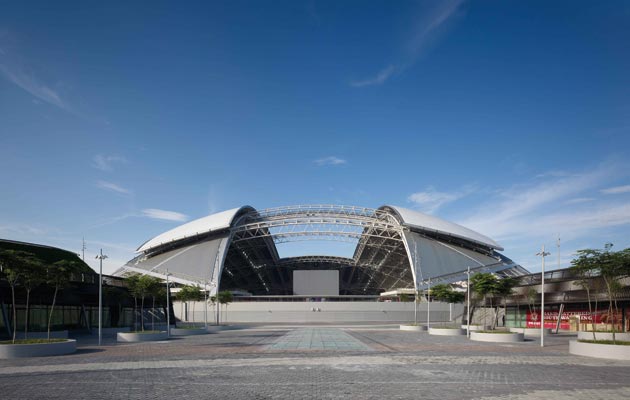|
As Tate Modern’s Switch House extension opens in London, we visit the monumental Herzog & de Meuron building and interview the gallery’s director Nicholas Serota By the time Herzog & de Meuron’s Tate Modern extension opened this July, Londoners were already very familiar with its twisting, monumental form. During construction, however, just before the concrete structure was engulfed in bourbon-brown bricks, it took on a ghostly, vaporous appearance. Seeing the building ‘au naturel’ emphasised how far the design has evolved from the architect’s early plans for a glass ziggurat obscured by protruding cuboid clusters. Those proposals were gloriously bold – equal in spirit to IM Pei’s glass pyramid at the Louvre – but they ultimately proved too radical for London. In the end, it was probably just as well. All that glass was unlikely to be conducive to displaying art, no matter how conceptual. Yet, as the Switch House opens and the UK Brexits, we must remember to fight our occasionally conservative instincts. No doubt the referendum on the country’s membership of the European Union has laid bare existing divisions in our society. But, to many remainers, it appeared that the decision was born of fear rather than courage. There was a pitch-perfect ‘What have the Romans ever done for us?’ moment during the postmortem coverage when a local expressed total antipathy towards the European Union while standing in front of a shiny new sports stadium paid for with EU funds. The Tate Modern extension will house artwork from all over the world, including Europe. Let it serve as a reminder of what we can achieve when we work together. |
Words James McLachlan
Cover Original photo by Andrew Meredith
|
|
|
||
|
|
||
|
IN THIS ISSUE
LIFESTYLE Kit Wi-fi boosters need hide no more, while stylish cyclists can sport a bag that marries tradition and function (above) Home A fashion designer’s take on marble and glass and Layer’s ceramic trays with a subtle technological insertion Transport The Hoff’s svelte new ride and a bus station with dignity Destination Watching for changes in Tel Aviv’s Noga neighbourhood, Helsinki’s crown-pleasing seafront sauna, Snøhetta thinks small in Oslo, Bali’s new brute, and an Amsterdam eatery just on the right side of tasteful
ARCHITECTURE The lost futurist Italo-Argentine architect Francisco Salamone’s extraordinary and little-known legacy Icon The Brynmawr Rubber Factory was a modernist act of faith, says John Jervis GALLERIES SPECIAL Pierre Lassonde Pavilion, Québec OMA’s three-stepped annexe (above) is public-facing to its core, says Jay Merrick Switch house, London Herzog & de Meuron’s extension holds its own against the original Tate Modern, says Will Wiles Q&A The Tate: yesterday, today and tomorrow – in the words of its director Nicholas Serota
DESIGN In praise of forgery Crystal Bennes on how the battle for and against strict copyright rules is playing out Lighting Guillotine chic from Diego Fortunato and Vibia Kitchen MVRDV’s transparent kitchen (cooking not advised) Furniture Industrial Facility’s ominous, stackable chair for Mattiazzi (above) Icon The curator of Olafur Eliasson’s 2003 Weather Project at Tate reflects on the groundbreaking installation Q&A Nendo founder Oki Sato likes to design fast Review Neo-Georgian architecture finally emerges from the shadows Rethink The terrifying beauty of the internet Obsession Max Fraser just loves an espresso cup |
||






















